

CarExpert.com.au
The CarExpert team's favourite cars of 2025
3 Days Ago
Hyundai's priciest Kona is an EV with competitive driving range and a long, long list of standard equipment.
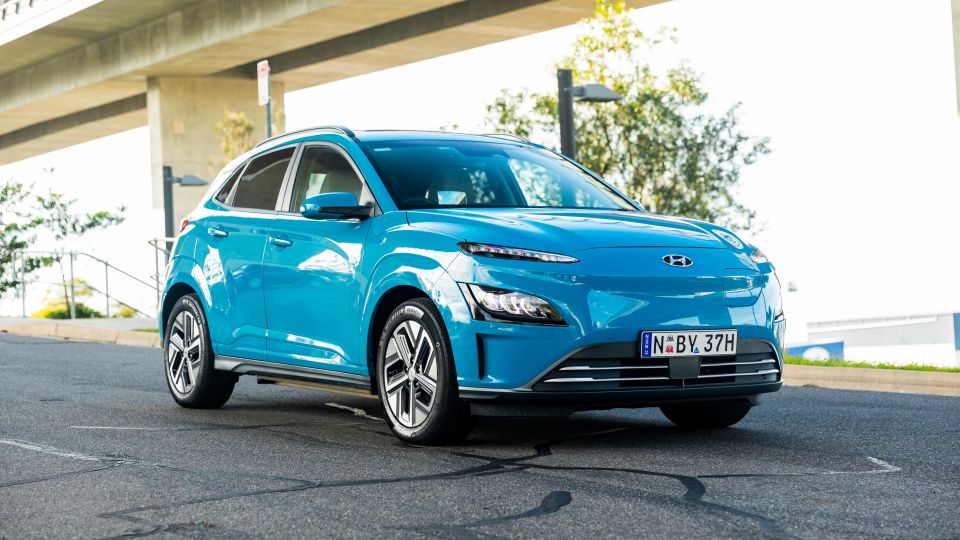
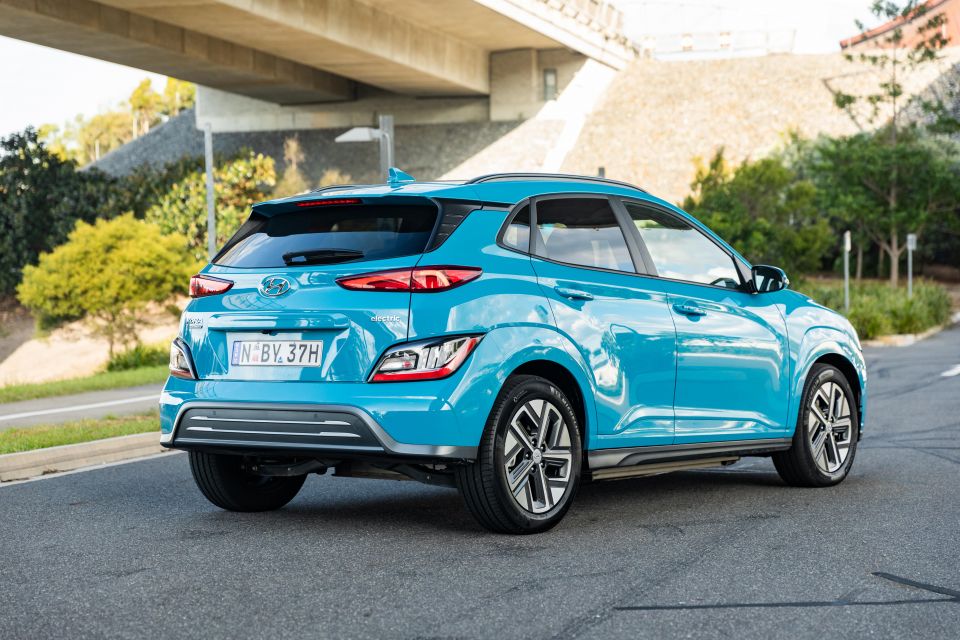

Quickly see how this car stacks up against its competition. Select any benchmark to see more details.
Where expert car reviews meet expert car buying – CarExpert gives you trusted advice, personalised service and real savings on your next new car.
The Hyundai Kona has one of the most diverse ranges of any crossover on the market.
The range spans from sub-$30,000 naturally-aspirated four-cylinder models through turbocharged all-wheel drive variants, the hot turbo N, and Standard and Extended Range all-electric models. In other markets, there are even diesel and hybrid options.
In Australia, this is the priciest Kona you can buy: the 2022 Hyundai Kona Electric Highlander Extended Range. You’ll need to take a deep breath after saying that name aloud, and you may gulp when you see the price.
Nevertheless, the Kona Electric is now the entry point to Hyundai’s electric vehicle range now that the Ioniq hatch has been discontinued locally, and in this trim level this is the nicest Hyundai EV you can buy before you step up to the Ioniq 5 and upcoming Ioniq 6.

The Highlander Extended Range is priced from $64,000 before on-road costs, or more than twice the price of a base, petrol-powered model.
All colours bar Atlas White and our tester’s striking Dive in Jeju costs an extra $595; an optional black/grey interior adds $295. Based on a Sydney post code, our tester rung up at $67,224 drive-away.
That makes it still eligible for EV incentives in some states, including New South Wales.
Those seeking a Kona Electric can either sacrifice some range by stepping down to a Standard Range model, or sacrifice some kit by stepping down to the Elite. If you do both, the price tag falls to $54,500 before on-roads.
MORE: What electric car buyer incentives are offered across Australia?
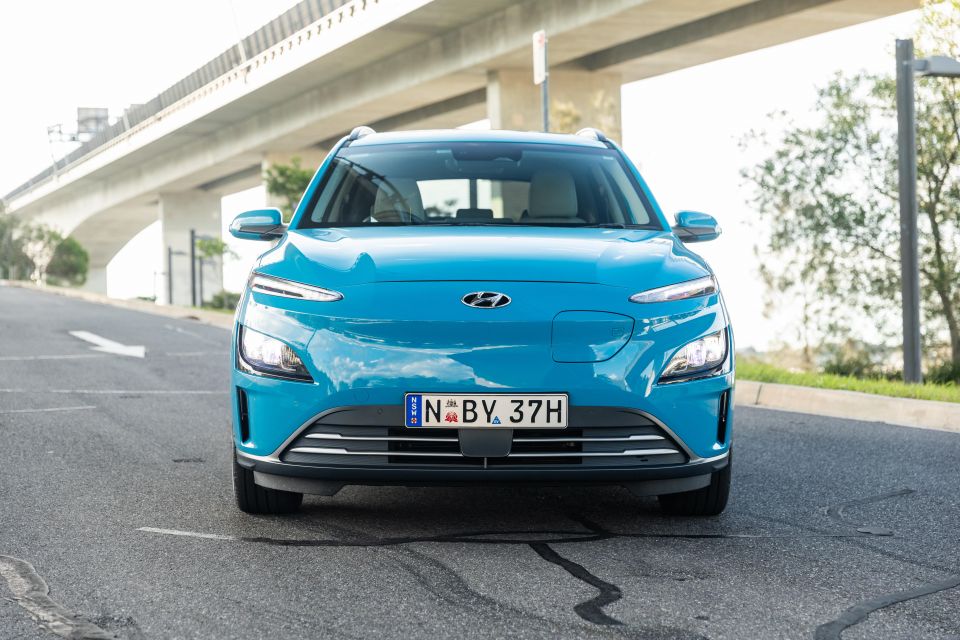
In top-spec guise, the Kona Electric is getting up there in price. The base, rear-wheel drive Ioniq 5 Dynamic is $69,990 before on-roads, while a front-wheel drive Volvo XC40 Recharge Pure Electric is $72,990 before on-roads and offers both more space and more badge cachet.
Then there’s the market-leading Tesla Model 3, which in base rear-wheel drive guise costs $65,500 before on-roads. A Polestar 2 Standard Range Single Motor is cheaper still at $63,900 before on-roads.
The Kona Electric, even in Highlander Extended Range guise, manages to undercut even the cheapest Kia Niro EV, however. Its corporate cousin costs $65,300 before on-roads in base S guise, or $70,780 drive-away.
It also stacks up well against the lower-range Mazda MX-30 E35 Astina ($65,490) and less luxurious Nissan Leaf e+ ($61,490).
With a flood of more affordable Chinese electric vehicles due here over the next 12 months, including an updated MG ZS EV, the new BYD Atto 3, MG 4 and GWM Ora Cat, it’s possible their success could come at the expense of the existing Japanese and Korean models at this end of the market.
The ZS EV starts at $46,990 drive-away, while depending on your State the BYD Atto 3 starts at $44,990 drive-away.
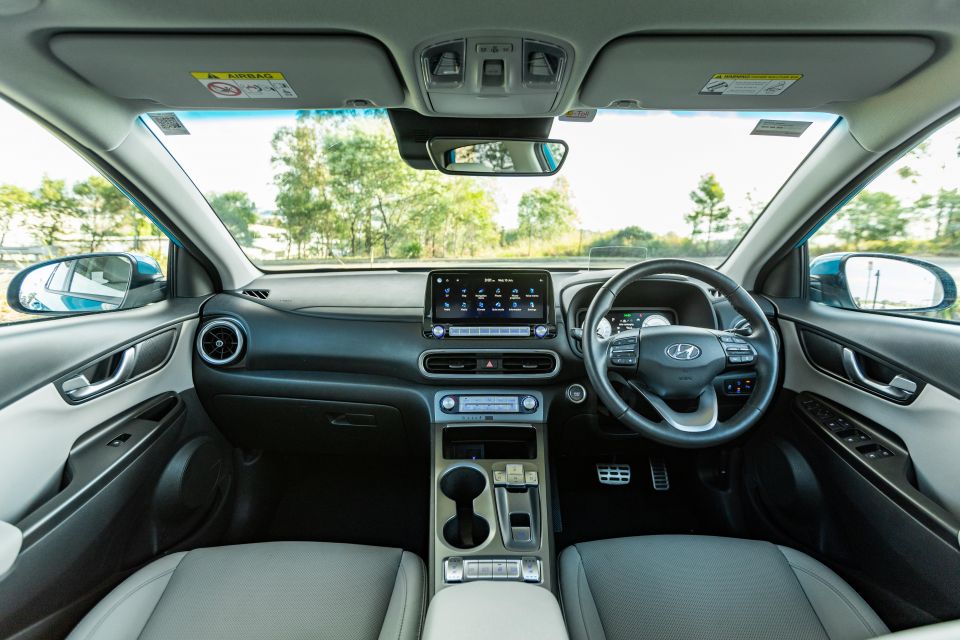
Buy your new car without the stress. It's fast, simple and completely free.

Great service from Travis and team, second time I have used this business would not hesitate to recommend them to anyone
Craig C.
Purchased a Ford Ranger in Sunshine Coast, QLD
CarExpert helped Craig save thousands on his Ford Ranger, now let us save you on your next new car.
Find a dealThere have been some meaningful changes made to the Kona’s interior in its transition to an EV, but this still feels like the cabin of a $30,000 car – not one costing over $60,000.
The ambience has been improved with a (optional) black/pale grey interior colourway, replacing the petrol Kona’s black-on-black cabin.
But all the materials are the same, which includes a hard plastic dash top and, more annoyingly, hard plastic door tops, with only minimal soft-touch surfaces.
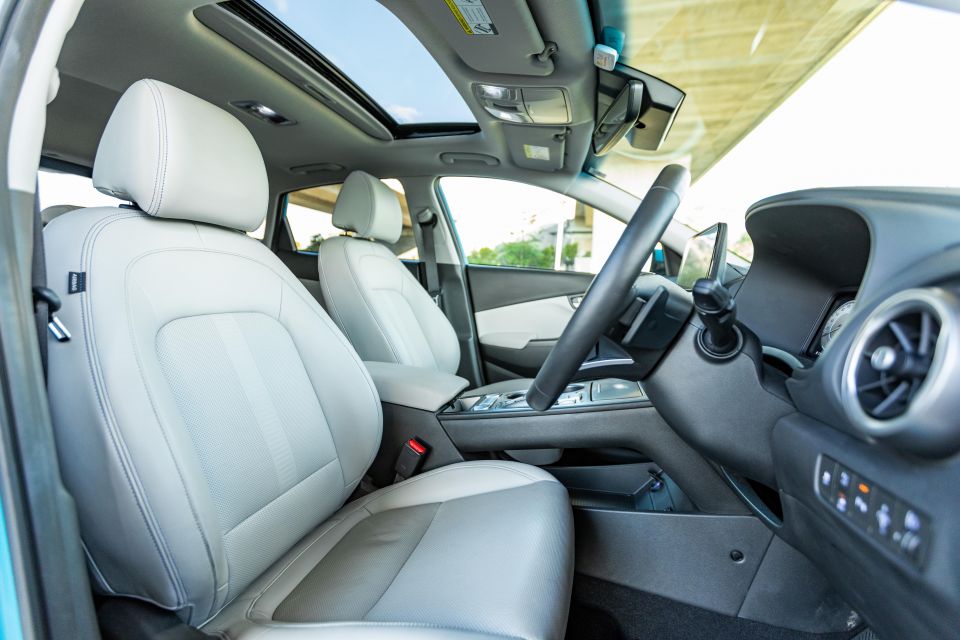
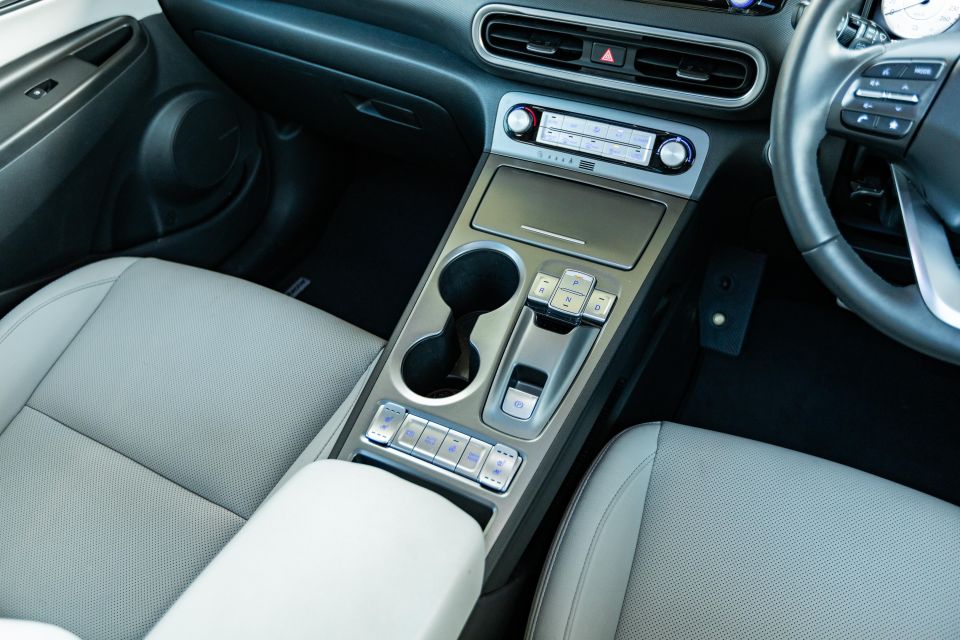
The Kona Electric’s unique centre console is a mixed bag. On one hand, it gives the Kona a more futuristic look, and frees up storage space underneath for a handy storage area, which also includes a USB-A port and a 12V outlet.
There’s also a handy covered compartment ahead of the shifter buttons, under which sits a wireless phone charger and a USB-A port.
Alas, we’re no fan of the push-button shifter in models like the Tucson and Santa Fe, and it’s no more welcome in the Kona Electric. It’s not as tactile as a conventional shifter or even rotary dial.

The transition from petrol to electric power has also robbed the Kona of interior room, and the petrol model was already no bastion of packaging excellence.
The higher floor, to accommodate the battery underneath, cuts into toe room and, while there’s enough room for someone measuring 180cm tall to sit behind a similarly tall front-seat occupant, rear-seat space is adequate not abundant.
There are still no rear air vents back here, and only a lone USB-A charging outlet. Child seats can be installed using one of the three top-tether or two ISOFIX anchor points, while there’s a fold-down centre armrest.
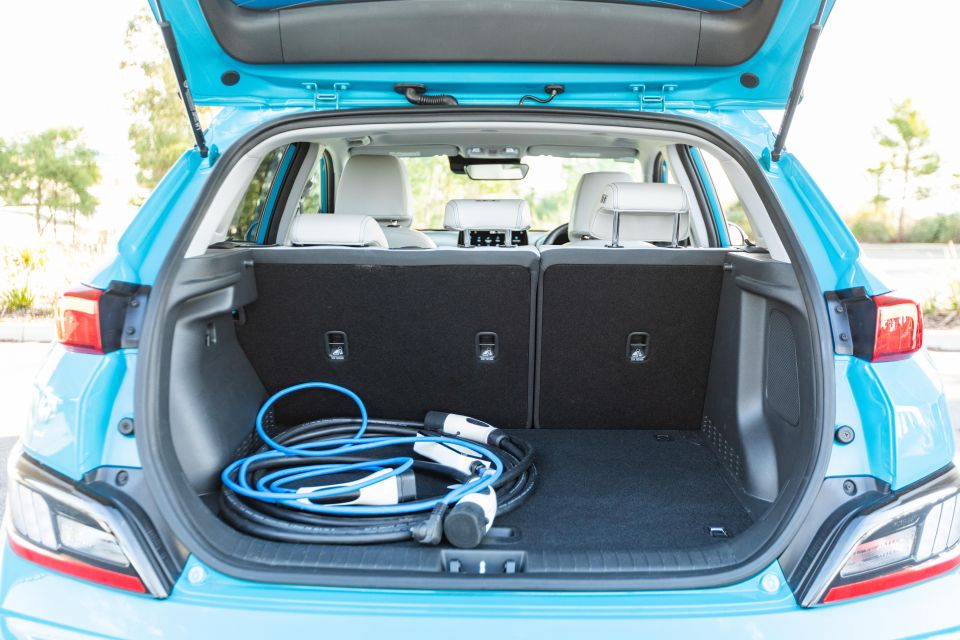
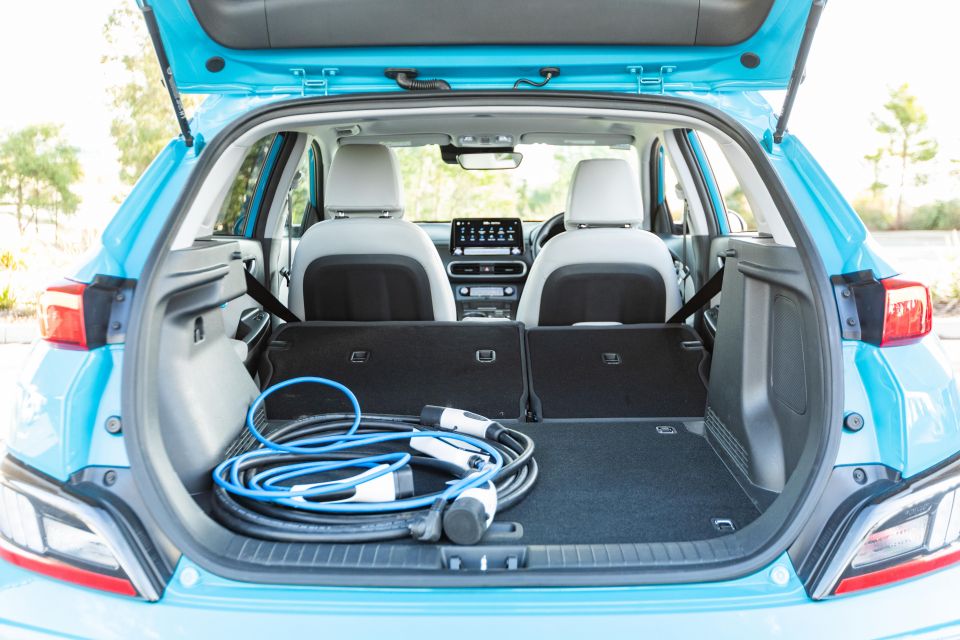
The Kona Electric has 332L of boot space with the rear seats up and 1114L with them folded (VDA). That’s only slightly less than a petrol Kona (374L/1156L), though there’s only a tyre repair kit in lieu of a space-saver spare.
There are some other Kona gripes that carry over to the EV, including a reversing camera that’s quite washed out at night and a head-up display that noisily whirs into position.
More welcome are the slick 10.25-inch touchscreen infotainment and digital instrument cluster screens that carry over.
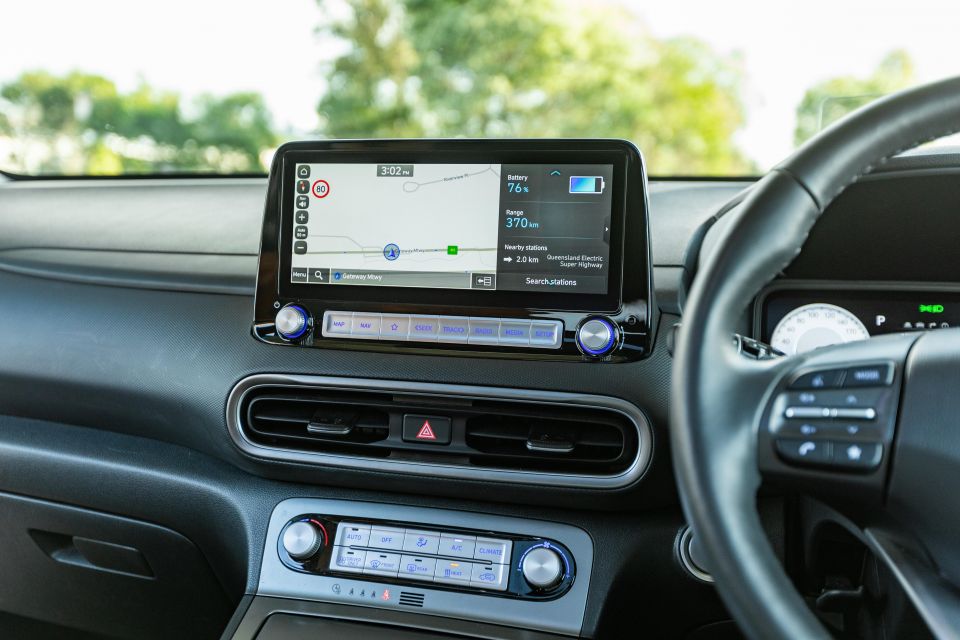
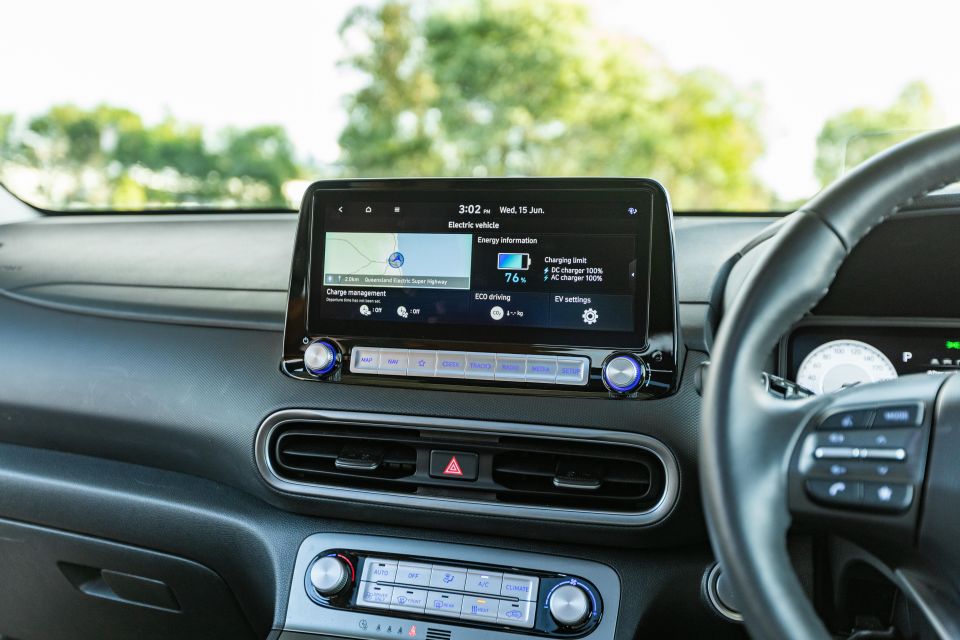
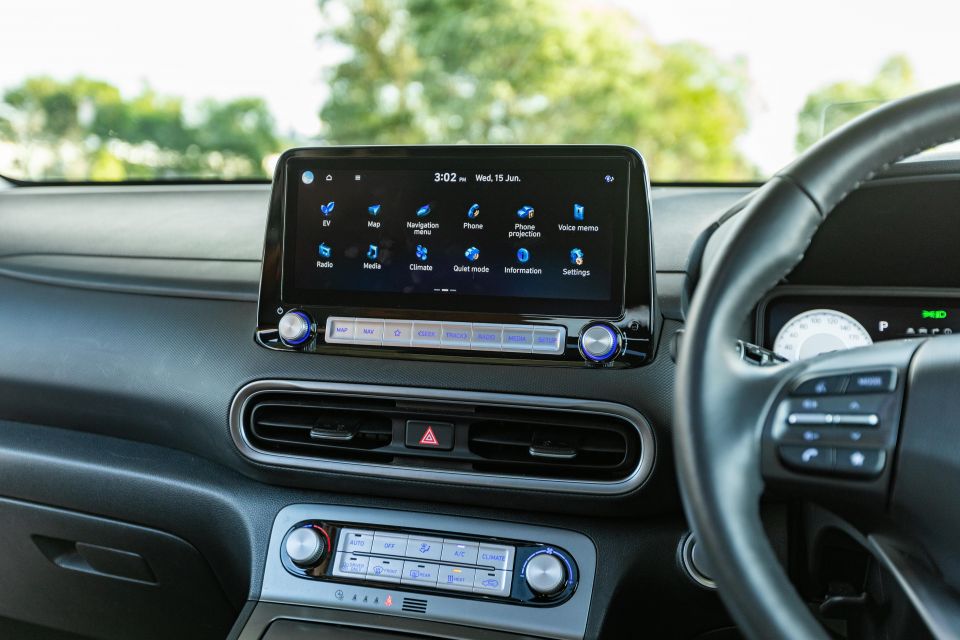
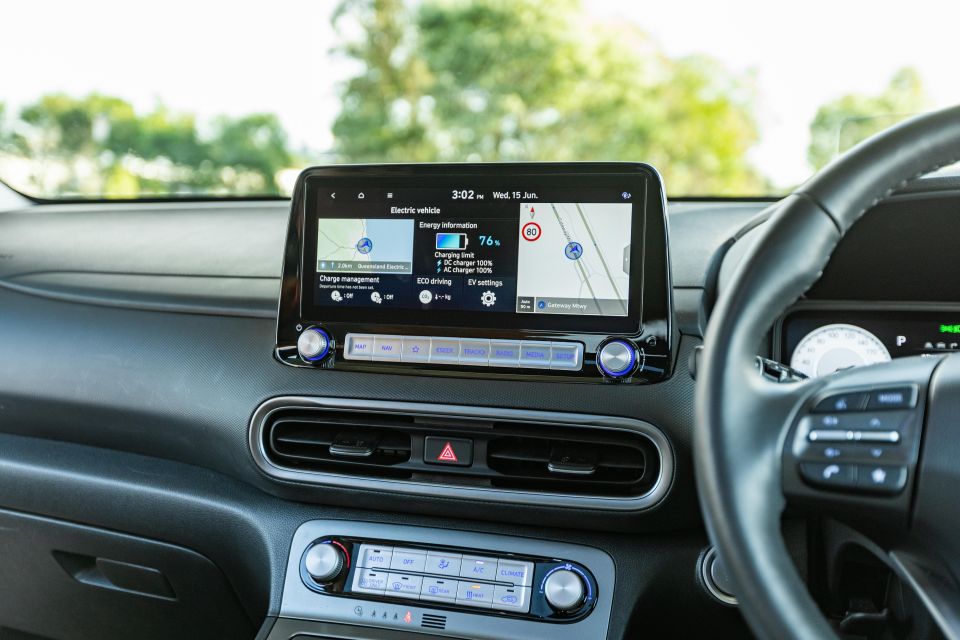
The infotainment system in particular boasts quick response times and attractive graphics, while there’s a dedicated EV menu that displays the nearest chargers and allows you to toggle settings like the limit for both AC and DC charging.
Helpfully, there’s a row of hard shortcut buttons underneath the touchscreen. While there’s no home button, you can program the star button accordingly.
The digital instrument cluster features different graphics depending on your drive mode, though it isn’t as adjustable as the digital clusters found in some vehicles – for example, there’s no map view like you’ll find in many Volkswagen Group products.
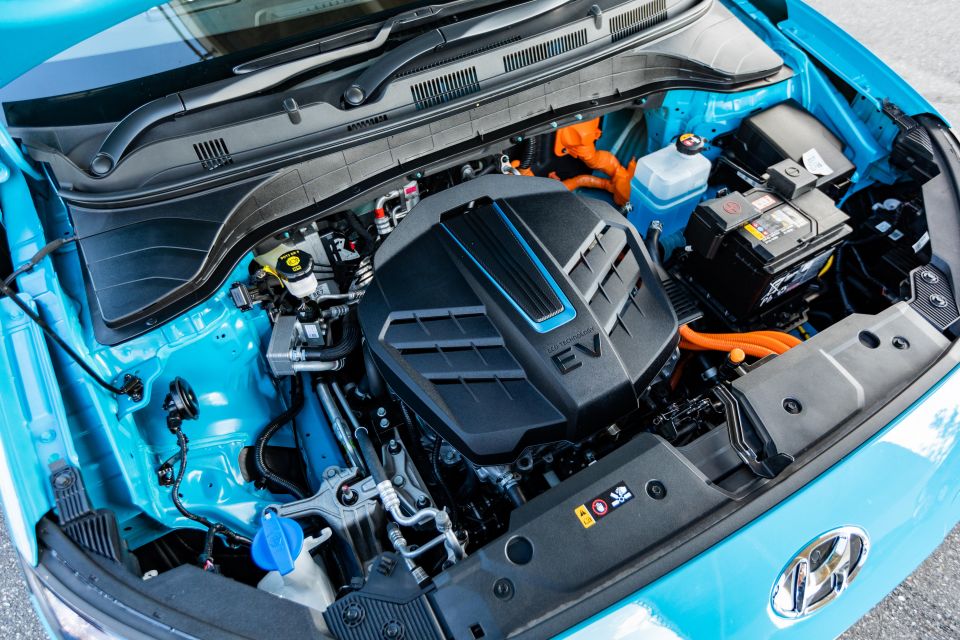
Kona Electric Extended Range models use a single, front-mounted electric motor with 150kW of power and 395Nm of torque. It’s mated to a 64kWh lithium-ion battery.
Hyundai claims a range of 484km on the stricter WLTP test cycle, which is better than an ZS EV (320km), Niro EV (460km) or Atto 3 Extended Range (420km), if ever so slightly worse than a Model 3 RWD (491km).
If you’re looking to save some money, the Standard Range – introduced last year – has a 100kW/395Nm electric motor, a smaller 39.2kWh battery pack, and 305km of WLTP range.

After a week or 333km of driving, including a mix of inner-city, suburban, rural and highway driving, our average energy consumption was 14kWh/100km. That’s close to Hyundai’s claim of 14.7kWh/100km.
During a rural driving loop at mostly highway speeds, we observed energy consumption of 16.1kWh/100km.
Both AC and DC charging are supported, with the former offering charge capacity of 7.2kW for a claimed charge time (10-100 per cent) of 9 hours 15 minutes, and the latter offering up to 100kW charge capacity for a charge time (10-80 per cent) of 47 minutes.
Using 50kW DC fast charging is slightly slower, with 10-80 per cent charge replenished in approximately 64 minutes.
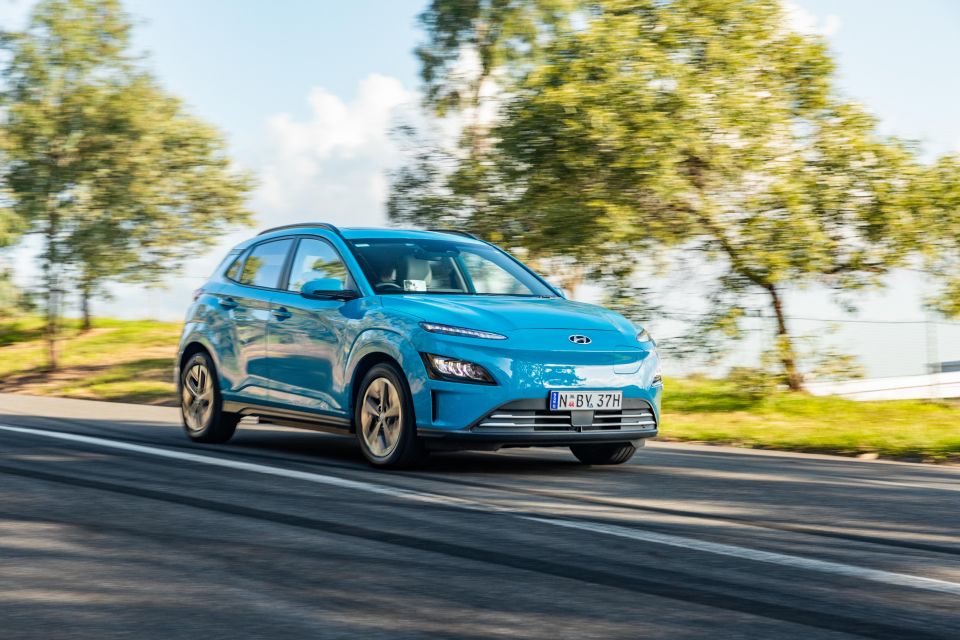
The Kona Electric is competent on the road, though it doesn’t feel quite as nimble as its compact dimensions would suggest.
The cabin is generally quiet, until you get up to highway speeds. It’s then that the interior gets rather boomy, with tyre noise permeating the cabin.
Ride quality is quite good overall, absorbing impacts with no hint of crashiness; the Kona Electric benefits from a multi-link rear suspension, unlike the standard torsion-beam of the 2.0-litre petrol version.
Like the Ioniq 5, which rides on a dedicated EV architecture, the Kona Electric will take a second or two to settle on some larger road undulations you may find on rural roads.
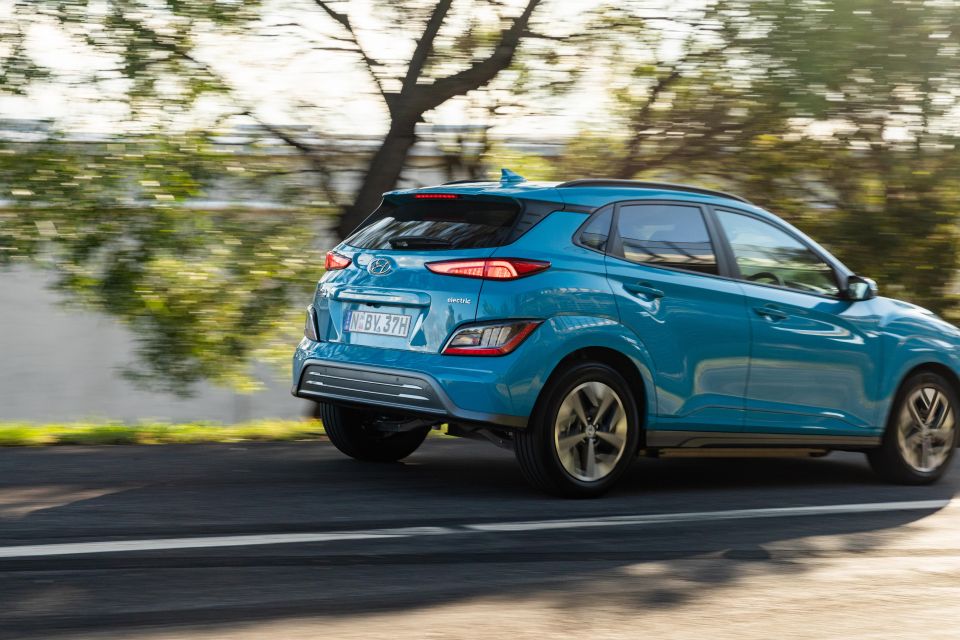
The steering has some heft to it and does communicate some of what’s going on underneath, though it feels a touch leaden at times.
There’s quite a bottom-heavy feeling to the Kona Electric – understandable, given that’s where the battery pack is. As a consequence of this weight, the Kona Electric isn’t particularly fun to drive – this is no Kona N, and it can feel ponderous in corners and resistant to sudden changes in direction.
At 1743kg, it weighs 150kg more than the corresponding Standard Range model on account of the larger battery. That makes it only around 7kg lighter than a Toyota RAV4 Cruiser AWDHybrid.
The electric powertrain provides more than enough thrust, however – in some instances, perhaps too much. You’ll need to moderate your throttle applications as too heavy a prod of the accelerator pedal yields plenty of torque steer, wheelspin and general front-end squirm.
Driven sedately, the Kona Electric is entirely pleasant.
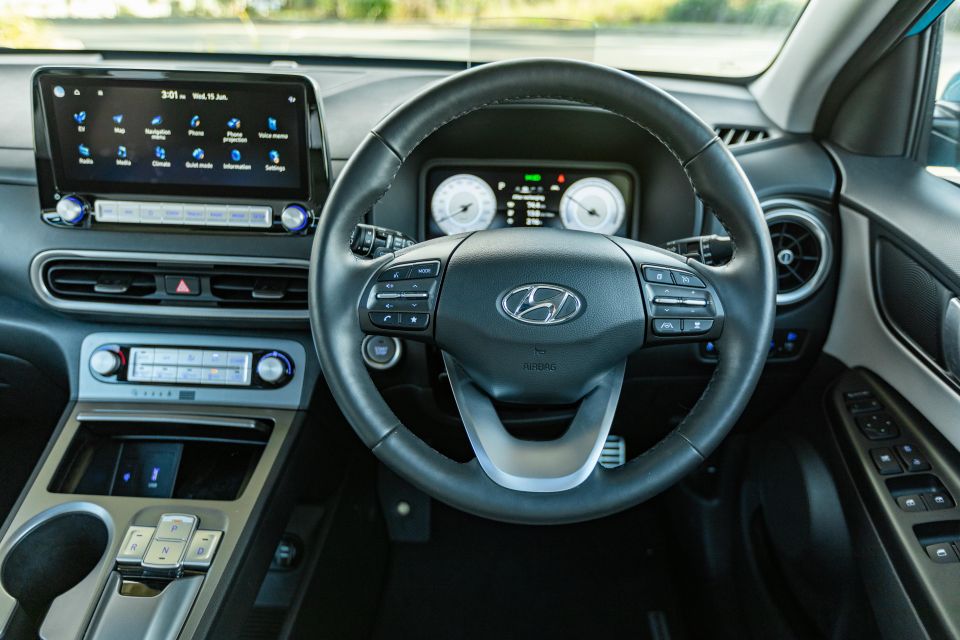
You can use the paddle shifters to toggle between three levels of brake recuperation, though the car will default to the mid-strength Normal mode on start-up.
The highest setting is good at slowing the car down, but it doesn’t bring it to a complete halt. Hyundai does, however, tout a one-pedal driving feature which works if the Smart Recuperation System is activated, and allows you to stop the vehicle by continuing to pull the paddle shifter.
You can toggle between Normal, Sport or Eco drive modes, plus an Eco+ mode we suspect is for when you’re panicking you won’t reach a charger in time as it turns the air-conditioning off entirely. Eco dulls the throttle somewhat, but not significantly.
While the car will remember you had it in the Eco drive mode when you restart it, it won’t recall if you had Auto Hold activated. I have the same gripe about my Hyundai Genesis.
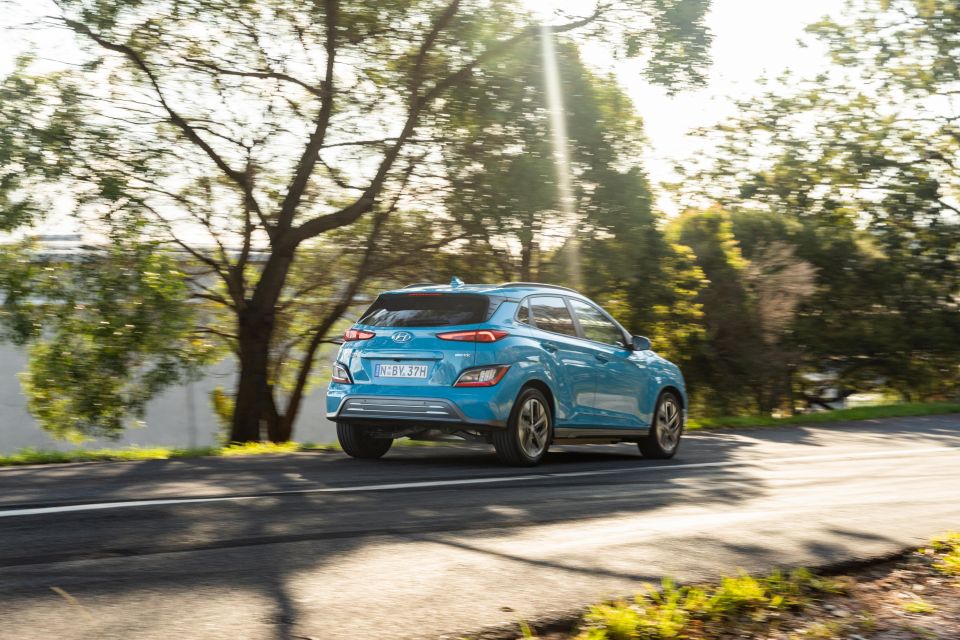
Where expert car reviews meet expert car buying – CarExpert gives you trusted advice, personalised service and real savings on your next new car.
The standard LED headlights bathe the road in crisp, bright light, and there are helpful cornering lights.
Kona models tend to have the worst Lane Following Assist calibration of any Hyundai product, but in the Kona Electric we didn’t experience much in the way of the awkward bobbing we’ve encountered in petrol models.
This lane-centring system is quite intrusive but it works well in conjunction with the adaptive cruise control to make highway driving effortless.
While we expect a lane-centring system to take charge in highway driving, the regular lane-keep assist, which defaults to on, is surprisingly intrusive and makes its presence keenly felt in day-to-day driving.


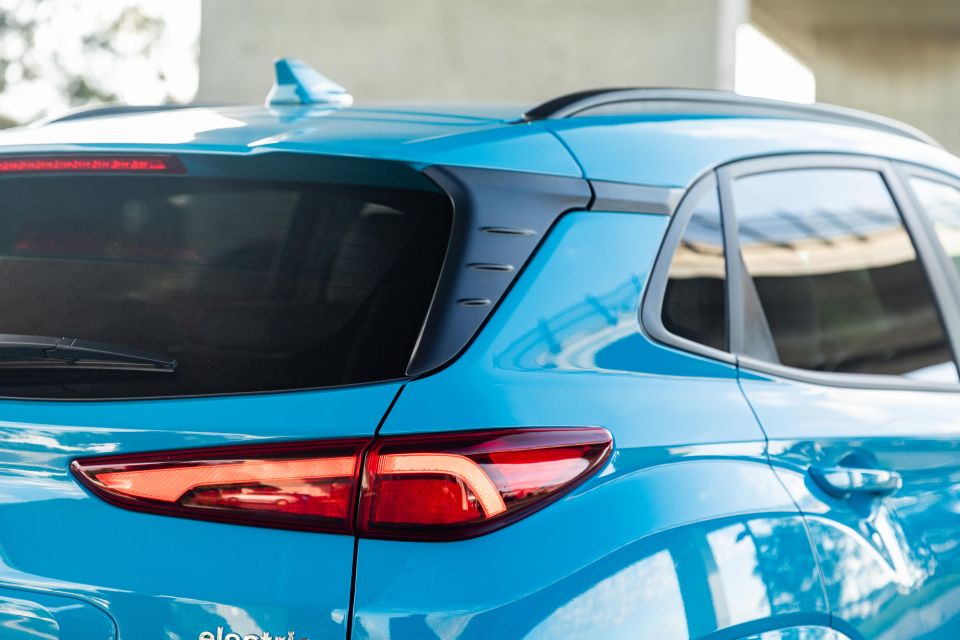
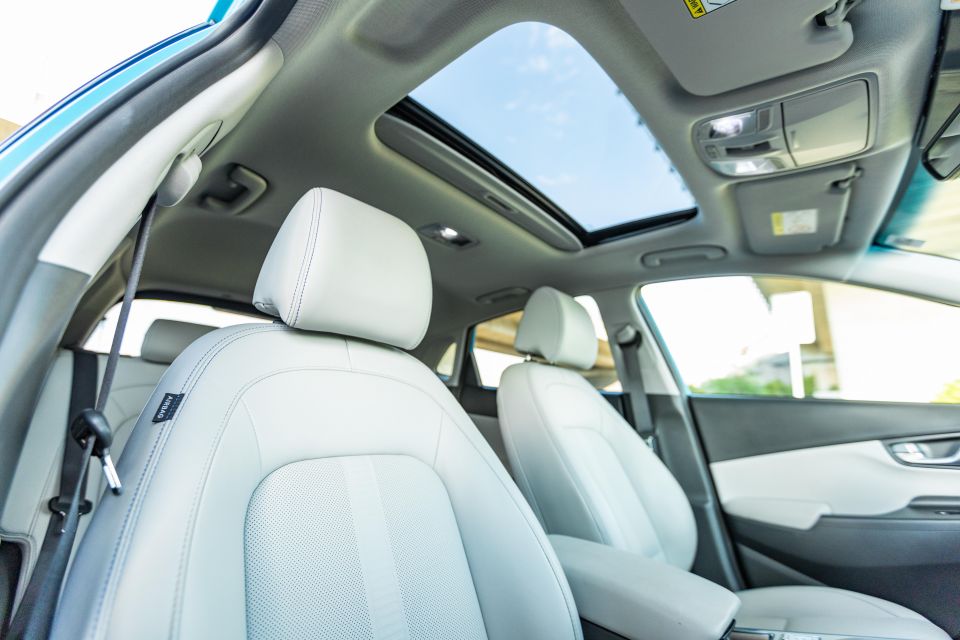
The Highlander Extended Range may be priced similarly to a base Tesla Model 3 or Polestar 2, but Hyundai includes a lot of standard kit.
Highlights include:
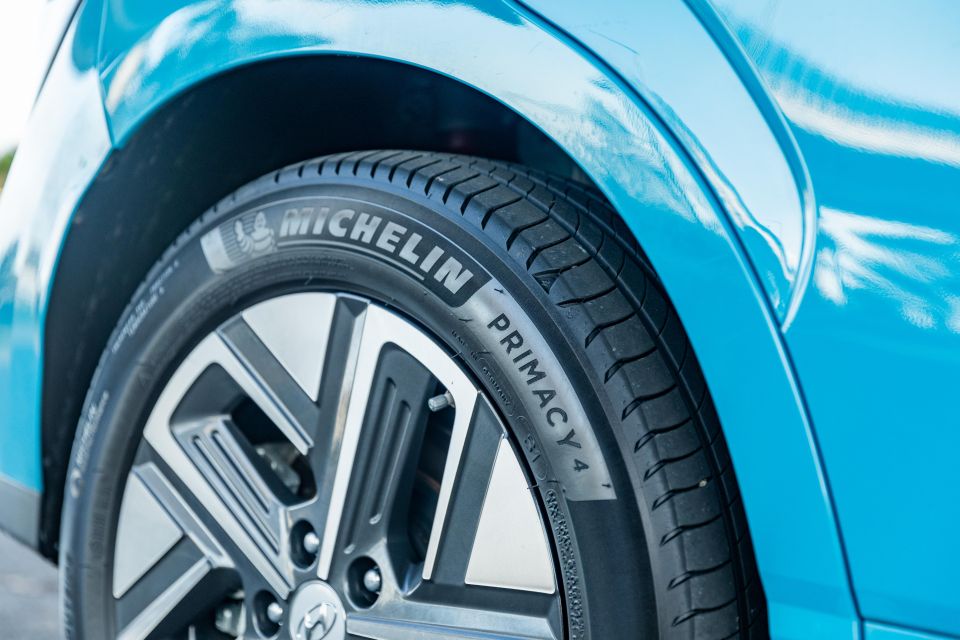

That’s in addition to features found in the Elite:
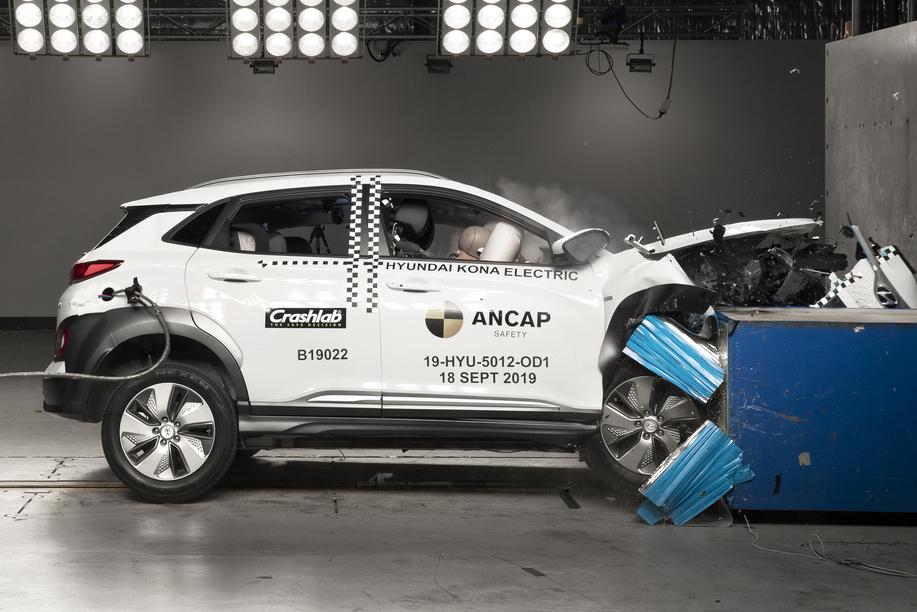
The Kona Electric carries over the combustion-engined model’s five-star ANCAP safety rating achieved in 2017.
Using older test criteria, the EV managed a frontal offset audit score of 14.97 out of 16.00 – slightly better than the petrol model’s 14.07/16.00 – while the 16.00/16.00 score for the side impact test and 2.00/2.00 for the pole test were carried over from the petrol version.
Whiplash protection was rated Good, pedestrian protection deemed Acceptable, and the overall score for the entire Kona line-up is 35.07 out of 37.00.
Standard safety features include:
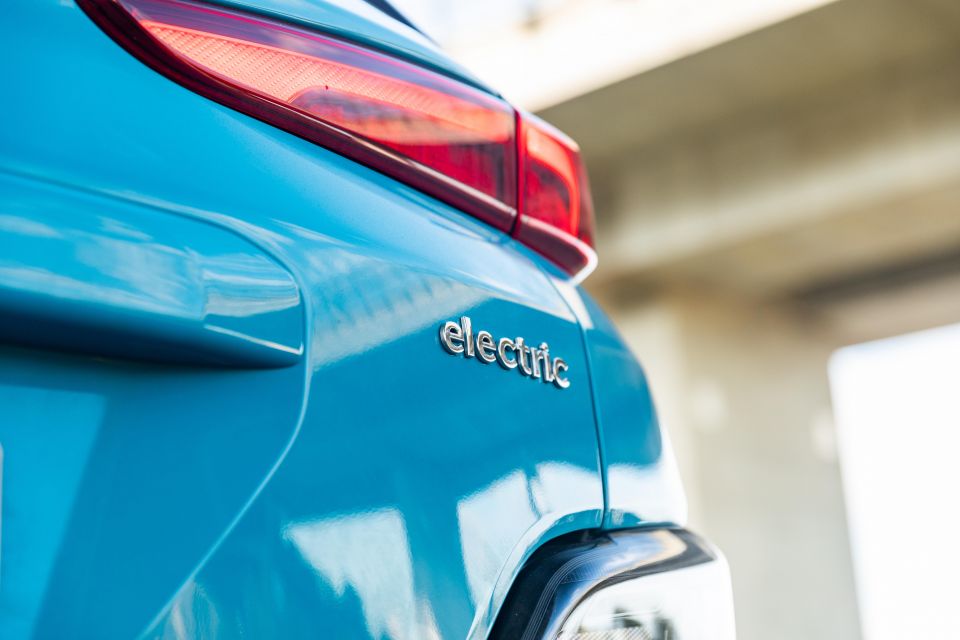
The Kona Electric is covered by a five-year, unlimited-kilometre warranty and requires servicing every 12 months or 15,000km – whichever comes first.
Hyundai offers capped-price servicing, with most services costing between $180 and $190. There are some exceptions, however. The 48-month/60,000km service, for example, will set you back $725, as will the 96-month/120,000km service.
Over the course of five years, it’ll cost you $1445 to service a Kona Electric. That’s more than you’ll spend in servicing a Tesla Model 3, and certainly more than the Polestar 2 with its five years of free servicing.
Kias are often more expensive to service than Hyundais, but the Niro EV is cheaper to service over five years if you purchase a service plan. This rings up at $1187.
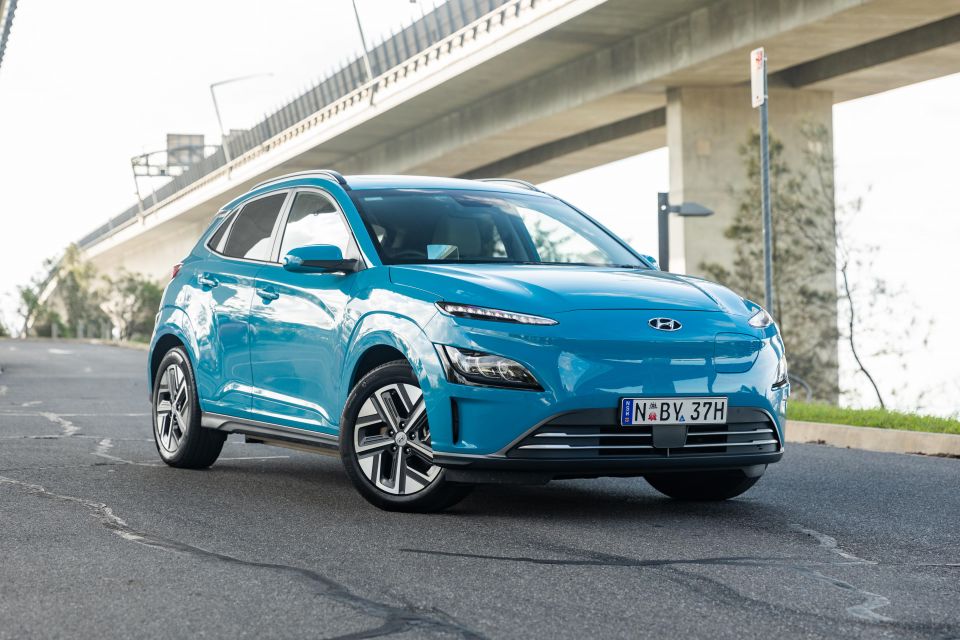
The Highlander Extended Range is a Kona Electric with about every feature you could want, but its pricing puts it in an awkward position.
It’s considerably more expensive than more spacious Chinese EVs like the MG ZS EV and BYD Atto 3, and is priced up against entry-level mid-sized models like the Tesla Model 3 and Polestar 2 that feel more befitting of this kind of price tag.
There’s also the temptation to spend a few thousand extra and get an Ioniq 5, if you can manage to secure one of the few coming into the country, as the larger Hyundai features a much more clever and spacious cabin.

While the Kona Electric is comfortable to drive and features technology that’s easy to use, the drawbacks of the standard Kona remain and are exacerbated by this higher price tag – subpar packaging as well as so-so material quality and presentation.
It also doesn’t feel quite as nimble to drive as its dimensions would suggest, with the Extended Range’s large, heavy battery weighing the Kona Electric down.
If you’re new to the world of EVs, however, the Kona Electric’s familiarity and ease of use should appeal.
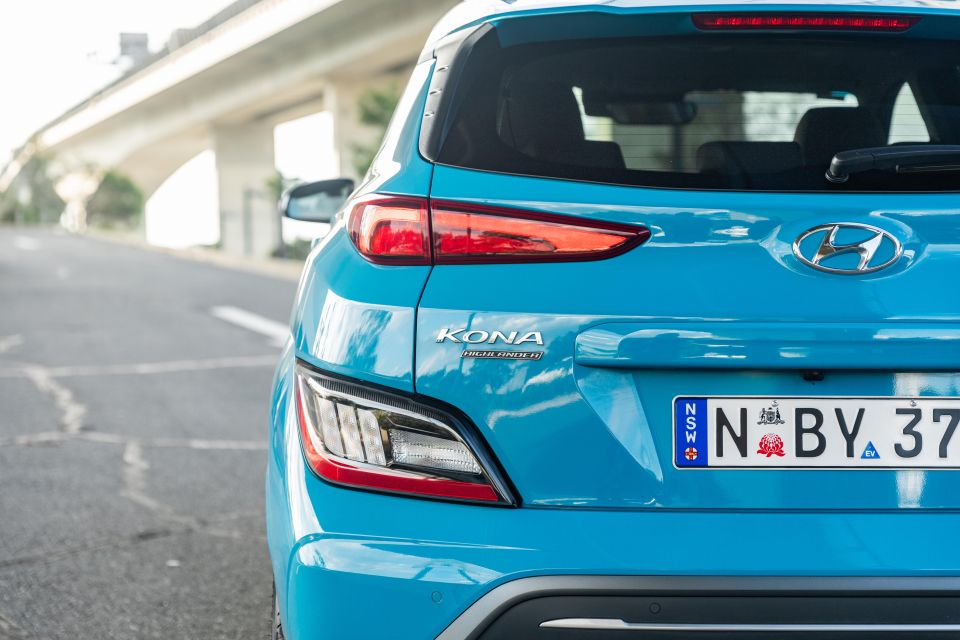
Click the images for the full gallery
MORE: Everything Hyundai Kona
Where expert car reviews meet expert car buying – CarExpert gives you trusted advice, personalised service and real savings on your next new car.
William Stopford is an automotive journalist with a passion for mainstream cars, automotive history and overseas auto markets.


CarExpert.com.au
3 Days Ago


Damion Smy
3 Days Ago


Damion Smy
4 Days Ago


Josh Nevett
4 Days Ago


Max Davies
4 Days Ago


Damion Smy
5 Days Ago